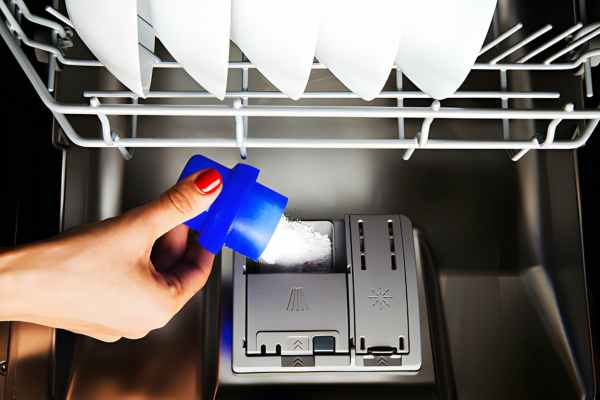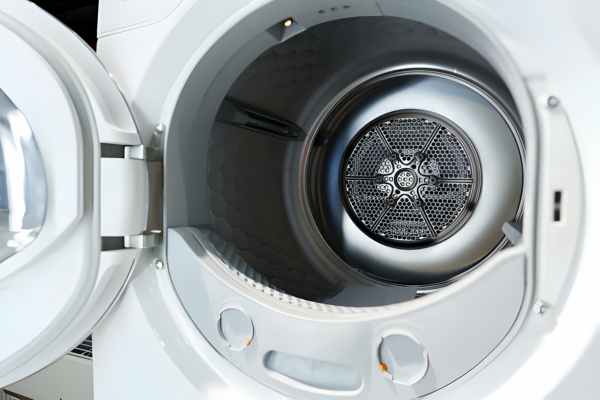A clean filter is key to ensuring your dishes come out spotless and your appliance works at its best. Over time, debris like food particles can accumulate, leading to inefficiencies in washing and potential damage. By knowing how to properly remove and clean the Whirlpool dishwasher filter, you can maintain your dishwasher’s performance and prolong its lifespan. In this blog post, we will walk you through the step-by-step process of removing the filter from your Whirlpool dishwasher with ease. Whether you’re new to dishwasher maintenance or looking to refresh your knowledge, we’ve got you covered. Get ready to become a pro at maintaining your Whirlpool dishwasher.
Why It’s Important to Clean Your Dishwasher Filter
Enhances Cleaning Performance
A clean filter allows water to circulate freely, ensuring your dishes come out clean and spotless. If the filter is clogged, your dishwasher can’t do its job effectively, leaving you with less-than-sparkling dishes.
Prevents Odors
Food particles and debris trapped in the filter can start to decay, causing unpleasant odors in your dishwasher. Regular cleaning prevents these smells, keeping your kitchen fresh.
Saves Energy and Water
A clogged filter can make your dishwasher work harder and longer, using more energy and water. By keeping the filter clean, you ensure your dishwasher operates efficiently, saving on utility bills and conserving resources.
Extends Appliance Lifespan
Regular maintenance, including filter cleaning, can prolong the life of your dishwasher. A clean filter prevents undue stress on the motor and other components, reducing the risk of breakdowns and costly repairs.
Prevents Damage and Repairs
Over time, a dirty filter can lead to issues like water not draining properly or the dishwasher not starting. Regular cleaning helps avoid such problems, keeping your dishwasher in good working order and preventing the need for repairs or replacements.
Here’s How To Remove Whirlpool Dishwasher Filter
Find the Filter

Maintaining your Whirlpool dishwasher, finding and cleaning the filter is crucial for optimal performance. Many users may overlook this simple yet important task, leading to clogs and ineffective cleaning. Removing the filter is a straightforward process that can be done in just a few steps, but the impact on your dishwasher’s efficiency is significant. By regularly checking and cleaning the filter, you can prevent debris buildup and ensure that water flows smoothly through your dishwasher. This not only improves the cleanliness of your dishes but also extends the lifespan of your appliance.
Twist to Remove

One innovative feature that sets the Whirlpool dishwasher apart from others is the twist to remove filter design. This simple yet effective mechanism allows users to easily access and clean the filter without any hassle. By twisting the filter in a certain direction, it can be removed effortlessly, making maintenance a breeze.
This twist to remove feature not only saves time but also ensures that the dishwasher operates at optimal performance. Regularly cleaning the filter prevents clogs and maintains water flow, improving overall cleaning results. This user-friendly design is a game-changer for those who want a hassle-free way to keep their dishwasher running smoothly.
Lift Out

Lift Out is a valuable technique when it comes to removing the filter from your Whirlpool dishwasher. Many users may find this process daunting at first, but with the right guidance, it can be a simple task that enhances the efficiency of your appliance. One key tip is to ensure you have unplugged the dishwasher and removed any dishes before attempting to lift out the filter. This will prevent any accidents and facilitate easy access to the filter.
Rinse Under Water

To remove the Whirlpool dishwasher filter, start by opening the dishwasher door and locating the bottom rack. Next, remove any dishes or utensils blocking access to the filter. Then, twist and pull out the cylindrical filter located at the bottom of the dishwasher. Rinse it thoroughly under running water to remove any food debris or residue that may have accumulated.
By rinsing the filter under water, you can ensure that your Whirlpool dishwasher continues to operate efficiently and effectively. Regular cleaning of the filter is essential for maintaining optimal performance and preventing clogs in the system. Remember to reassemble the filter properly before closing the dishwasher door to avoid any leaks or malfunctions during a wash cycle.
Soak if Needed

Whirlpool dishwasher filter is clogged and in need of a good cleaning, soaking it might just be the trick you need. Soaking the filter in warm soapy water can help to break down and loosen any built-up debris, making it easier to clean and more effective at filtering out food particles during future wash cycles. Additionally, by regularly soaking your dishwasher filter, you can extend its lifespan and ensure that your dishwasher continues to run efficiently.
One tip to keep in mind when soaking your Whirlpool dishwasher filter is to use a gentle cleaning solution, such as dish soap or vinegar, rather than harsh chemicals that could damage the filter material. Allowing the filter to soak for at least 15-30 minutes will give the cleaning solution enough time to penetrate and dissolve any stubborn grime.
Check for Clogs

Checking for clogs in your dishwasher is crucial to ensure optimal performance and prevent potential damage. One of the key areas to inspect is the whirlpool dishwasher filter, which can easily get clogged with food particles and debris. To remove the filter, start by consulting your user manual for specific instructions tailored to your model.
Once you locate the filter, gently twist it counterclockwise and lift it out. Rinse it under running water to dislodge any trapped dirt or grime. For stubborn clogs, a small brush or toothbrush can be used to scrub away buildup. Remember to reinstall the clean filter properly before using your dishwasher again – this simple maintenance task can go a long way in prolonging the life of your appliance and ensuring sparkling clean dishes every time.
Rinse Housing

Rinse Housing is a crucial aspect of maintaining your Whirlpool dishwasher’s performance and longevity. The dishwasher filter, located within the rinse housing, plays a key role in removing food particles and debris from your dishes. To clean and remove the dishwasher filter, start by locating the filter assembly on the bottom of the appliance. Gently twist or lift out the filter to access it for cleaning.
Dry the Filter

To properly clean and dry the filter of your Whirlpool dishwasher, first remove it from the machine by following the manufacturer’s instructions. Rinse the filter thoroughly under warm water to remove any food particles or debris that may have accumulated. Use a soft brush or cloth to gently scrub the filter if needed, being careful not to damage any delicate components.
Once clean, place the filter in a well-ventilated area to air dry completely before re-installing it in the dishwasher. Ensuring that the filter is completely dry will help prevent mold or bacteria growth and maintain optimal performance of your appliance. By taking these simple steps to clean and dry your Whirlpool dishwasher filter regularly, you can prolong its lifespan and keep your dishes sparkling clean with every wash.
Replace the Filter

Replacing the filter in a Whirlpool dishwasher is a simple yet important maintenance task that many overlook. To remove the filter, start by locating it at the bottom of the dishwasher tub. Twist or unlock the filter cover to access the filter itself. Once exposed, carefully lift out the filter and inspect it for debris or buildup. Cleaning or replacing this filter regularly can significantly improve your dishwasher’s performance and prevent clogs that may lead to costly repairs down the line.
How to clean a whirlpool dishwasher without removable filter?
To clean a whirlpool dishwasher without a removable filter, you can start by removing any debris or food particles from the bottom of the dishwasher using a damp cloth or sponge. Next, mix a solution of equal parts water and white vinegar and pour it into the bottom of the dishwasher. Run a hot water cycle with this solution to help break down any built-up grime or residue.
After running the vinegar cycle, sprinkle baking soda on the bottom of the dishwasher and let it sit for an hour to help neutralize odors and further clean the interior. Finally, wipe down the inside of the dishwasher with a clean cloth soaked in warm soapy water to remove any remaining dirt or residue. Regular maintenance like this can help keep your whirlpool dishwasher clean and functioning efficiently.
How do I clean my dishwasher filter without removing it?
To clean your dishwasher filter without removing it, you can start by running a cycle with hot water and vinegar. Simply fill a cup with white vinegar and place it on the top rack of the dishwasher. Then run a hot water cycle to help dissolve any buildup or debris in the filter. Another method is to sprinkle baking soda at the bottom of the dishwasher before running a hot water cycle. This can help break down grease and grime in the filter.
Additionally, using a dishwasher cleaning tablet or powder specifically designed to clean filters can be effective in maintaining a clean filter without removal. These products are formulated to target and remove food particles, grease, and mineral deposits that may be clogging the filter. Regularly using these cleaning methods can help keep your dishwasher filter functioning properly and extend its lifespan.
The Final Thought
Knowing how to remove the filter from your Whirlpool dishwasher is essential for maintaining optimal performance and cleanliness. By following the simple steps outlined in this guide, you can easily access and clean the filter to ensure that your dishes come out sparkling clean every time. Regular maintenance of the filter will also extend the lifespan of your dishwasher and prevent potential issues down the line. Remember to consult your dishwasher’s manual for specific instructions and always unplug the appliance before attempting any maintenance tasks.
